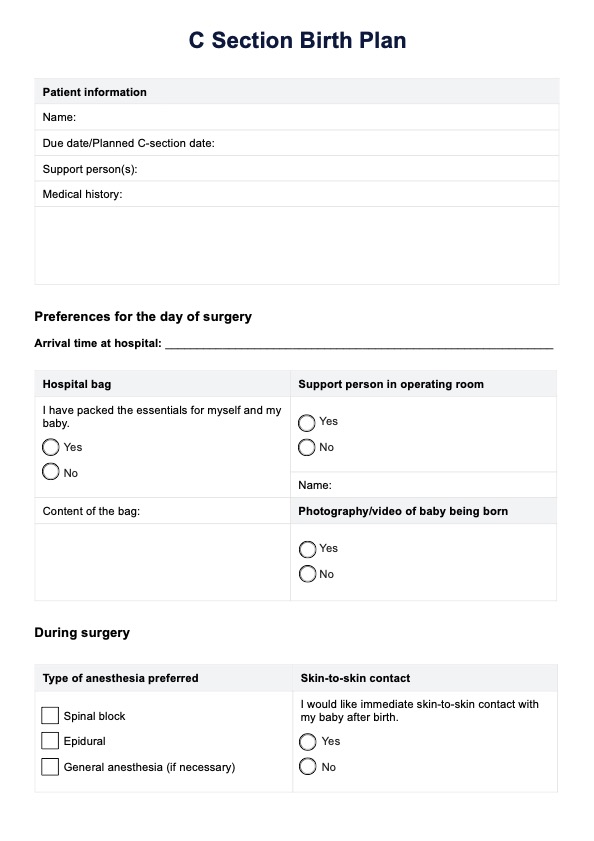Yes, having a birth plan for a planned C-section helps ensure that your preferences for the surgery, such as skin-to-skin contact and the role of the support person, are communicated clearly. It allows healthcare providers to tailor the birth experience to your needs, making the process smoother and more personalized.

C Section Birth Plan
Learn about the C Section Birth Plan Template and how it can work with you to empower women during their birth experience.
C Section Birth Plan Template
Commonly asked questions
Planned C-sections are typically scheduled around 39 weeks of pregnancy to minimize the risk of labor starting naturally and to ensure the baby is fully developed. However, in some cases, they may be scheduled earlier for medical reasons.
While the actual C-section surgery is performed under anesthesia and is not painful, recovery from a planned C-section can involve discomfort or pain as the body heals from the major surgery. Many women report that planned C-sections are more manageable than emergency C-sections due to better preparation and recovery support.
EHR and practice management software
Get started for free
*No credit card required
Free
$0/usd
Unlimited clients
Telehealth
1GB of storage
Client portal text
Automated billing and online payments











